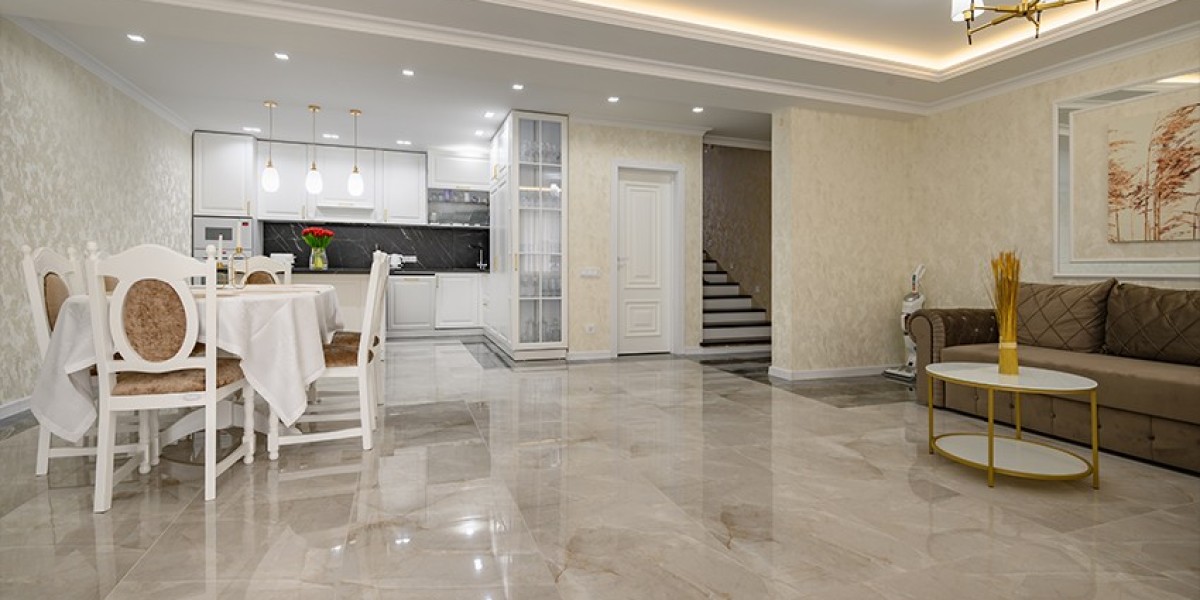Marble floors are a timeless addition to any home, exuding elegance and luxury. However, their beauty requires regular care to maintain their pristine condition. Improper maintenance can dull the shine and diminish the charm of marble over time. Here are five essential tips for keeping your marble floors spotless, ensuring they remain a stunning focal point of your space.
1. Regular Cleaning is Key
Marble is a porous material, meaning it can easily absorb dirt, spills, and stains. To prevent this, establish a routine cleaning schedule. Here’s how you can keep your marble floors clean daily:
- Sweep or Dust Daily: Use a soft, dry microfiber mop or broom to remove dust and dirt. Abrasive debris can scratch the marble surface, so keeping it free of grit is essential.
- Use a Damp Mop Weekly: Clean the floor with a damp mop using warm water and a marble-specific cleaner. Avoid acidic or harsh cleaning agents like vinegar, which can etch the surface.
- Wipe Up Spills Immediately: Marble is particularly susceptible to staining from spills, especially liquids like wine, coffee, and citrus juice. Quickly blotting spills prevents them from penetrating the surface.
Maintaining this routine will help your floors look as good as new for years to come.
2. Seal Your Marble Floors Periodically
Sealing is one of the most effective ways to protect marble from stains and damage. While many homeowners assume that sealing is a one-time process, it’s something that needs to be done periodically.
- Why Seal Marble?: The sealant acts as a barrier, reducing the absorption of liquids and minimizing stains.
- Frequency of Sealing: Depending on the type of marble and the level of foot traffic, sealing may be required every 6-12 months. High-traffic areas like hallways or kitchens will need more frequent attention.
- How to Seal: Choose a high-quality marble sealer, apply it evenly across the surface, and allow it to dry completely. This process not only protects the marble but also enhances its natural shine.
Sealing your marble floors not only extends their life but also makes cleaning them much easier.
- Avoid Harsh Cleaning Products
Using the wrong cleaning products can do more harm than good. Marble is a delicate material that reacts to certain chemicals, leading to discoloration or etching. Here’s what to avoid:
- Acidic Cleaners: Common household cleaners like vinegar, lemon, or ammonia-based solutions can damage the marble’s surface by corroding its natural finish.
- Abrasive Scrubbing Pads: Opt for soft cloths or microfiber mops rather than hard-bristled brushes or abrasive sponges. Scrubbing too hard can create scratches that dull the marble’s polished appearance.
Instead, use cleaning products specifically formulated for marble. A mild dish soap diluted in water can also work as an alternative for light cleaning.
When comparing granite vs marble flooring, one of the key differences is marble’s susceptibility to etching. While granite is more resilient, marble requires extra care in selecting the right products.
4. Protect Your Floors from Scratches and Scuffs
Marble’s smooth surface can easily scratch if precautions aren’t taken. To protect your floors:
- Place Mats and Rugs: Use area rugs or mats at entryways and high-traffic zones to trap dirt and reduce wear. Ensure the underside of rugs is non-slip and won’t scratch the floor.
- Furniture Pads: Attach felt pads or rubber caps to the legs of chairs, tables, and other furniture to prevent them from leaving scratches when moved.
- Shoes Off Policy: Encourage family members and guests to remove their shoes before walking on marble floors. High heels and hard soles can leave marks or scuffs.
Even though polished marble has a smooth, reflective surface, it’s less forgiving than other materials like ceramic tiles. When choosing between polished vs glossy tile, keep in mind that polished finishes can accentuate scratches, making protection even more critical.
5. Polish to Restore Shine
Even with regular cleaning, marble floors can lose their natural luster over time. Polishing is an excellent way to restore their shine and keep them looking as beautiful as the day they were installed.
- When to Polish: If you notice dull spots or scratches on your marble floors, it might be time to polish them. This process can be done professionally or with DIY marble polishing kits.
- DIY Polishing: Use a marble polishing powder and a soft cloth or buffer to gently restore the surface’s shine. Always follow the product’s instructions carefully.
- Professional Polishing: For deeper scratches or stains, hiring a professional is often the best solution. They use specialized equipment and techniques to rejuvenate marble floors.
Polishing not only enhances the marble’s aesthetics but also helps protect its surface by reducing the appearance of scratches and etches.
Bonus Tips for Long-Lasting Marble Floors
In addition to the primary maintenance tips, here are a few extra measures you can take:
- Temperature Matters: Avoid placing extremely hot or cold items directly on marble surfaces. Extreme temperature changes can weaken the stone.
- Humid Environments: Use a dehumidifier in areas with high humidity to prevent moisture absorption.
- Regular Inspections: Check for cracks or chips regularly. Addressing small issues promptly can prevent them from becoming bigger problems.
If you’re considering other flooring options, it’s worth comparing marble with alternatives like ceramic tiles. A reputable Ceramic Floor & Wall Tiles Manufacturing Company can provide durable and low-maintenance options if marble doesn’t suit your needs.
Conclusion
Marble floors are an investment in elegance and sophistication, but they require care to preserve their beauty. By following these five maintenance tips—regular cleaning, periodic sealing, using the right cleaning products, protecting against scratches, and polishing—you can keep your marble floors spotless and in top condition.
Remember, maintaining marble is different from maintaining other materials. Whether you’re evaluating granite vs marble flooring or wondering how marble compares to other finishes like polished vs glossy tile, it’s clear that marble demands attention to detail. With proper care, your marble floors will continue to enhance your home’s aesthetics for years to come.








